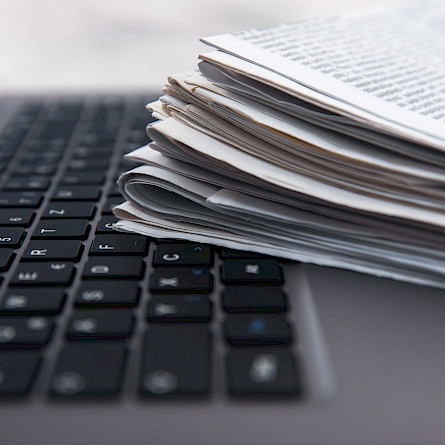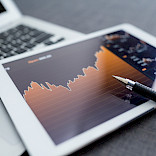Morning
My weekdays generally begin between 5:00 and 5:30 a.m. Armed with a good cup of coffee, I open my tablet and browse through several information sources. The Wall Street Journal, The New York Times, Bloomberg, and The Economist are must-reads. If I still have a bit of time before the kids wake up, I enjoy looking at more specialized sites like rundown.ai, Harvard Business Review, and Nature.
This time of day presents a significant challenge: selection. Since my time is limited, I can’t read everything. One trap with this kind of reading is consuming only short-lived information—that is, news that quickly loses its relevance. I therefore try to identify stories that could have an impact on our portfolio and on the stocks on our watchlist. I also look for articles that teach me more about a sector or industry and help me identify long-term trends.
Day
When I arrive at the office, the second phase of my day begins. It’s marked by more complex analytical tasks, such as monitoring portfolio holdings, analyzing quarterly earnings, researching new ideas, and writing analyses for team members to be discussed in our meetings.
Of course, we constantly visit public companies’ websites and use tools like FactSet and Bloomberg to conduct our analyses. Beyond these tools, I’ve noticed two major changes in our research process over the past few years.
First, the growing accessibility of expert networks has been a major and meaningful shift for us. Reading annual reports is still valuable—but often biased. Executives want to show their best side. The emergence of platforms like Tegus, AlphaSense, and InPractice gives us the ability to read interviews with former employees, competitors, clients, and suppliers. We believe these interviews give us a more realistic view of the risks and challenges. For example, in recent months we discovered that a company’s president was poorly regarded by colleagues and that the work environment was tense. A few months later, she was dismissed.
The second major change is the rise of artificial intelligence. In 2023, I would have said we used it very little. However, I must admit that the performance of various models continues to improve at lightning speed. The use of Deep Research features from ChatGPT, Gemini, and Perplexity is now a major asset for us. These tools help us generate summary analyses of new companies or refine and steer research through very specific questions. Of course, we must validate all the information, but we’re already seeing productivity gains.
Evening and Weekend
During this period, I turn to more traditional paper reading. On weekends, for instance, I enjoy reading magazines like Bloomberg Businessweek and Harvard Business Review. This time is also focused on listening. I consume a wide range of podcasts, audiobooks, YouTube videos, audio transcripts of conferences, and the audio versions of expert network interviews. My colleague Félix Gérin uses Google’s Notebook LLM to leverage AI to convert texts into podcasts. The result is impressive. This audio format allows me to optimize my time while walking the dog, mowing the lawn, or going for a short run.
I believe this part of my work is very important and gives me access to information I simply wouldn’t get otherwise. For example, if I want to stay informed about the latest developments in artificial intelligence, I can’t rely on books alone. The advances are too fast. I need to consume podcasts or YouTube videos. It’s surprising how many experts you can find on a wide variety of topics across these platforms.
In a recent podcast, Bill Nygren, a manager at Harris Oakmark, mentioned that if you don’t feel a genuine calling for this profession, you’re better off not doing it—because it’s an extremely demanding job. I couldn’t agree more.
In conclusion, it’s important to mention that my colleagues don’t necessarily follow the same routine or research process. In fact, that’s a good thing—otherwise, we’d all be consuming the same information, which is far from optimal. The beauty of our team lies in its diversity.
Jean-Philippe Legault, CFA
Portfolio Manager at COTE 100
_______






